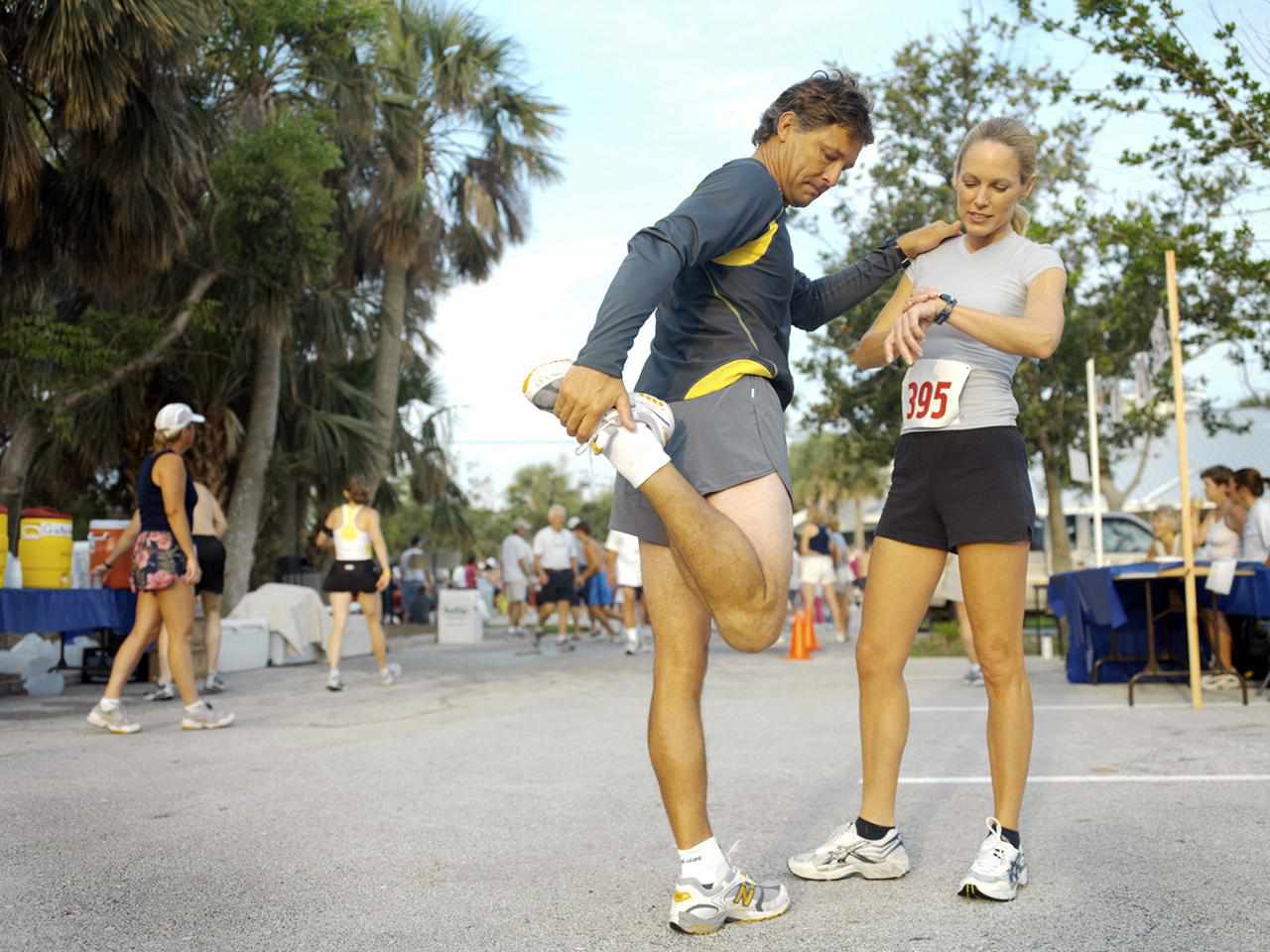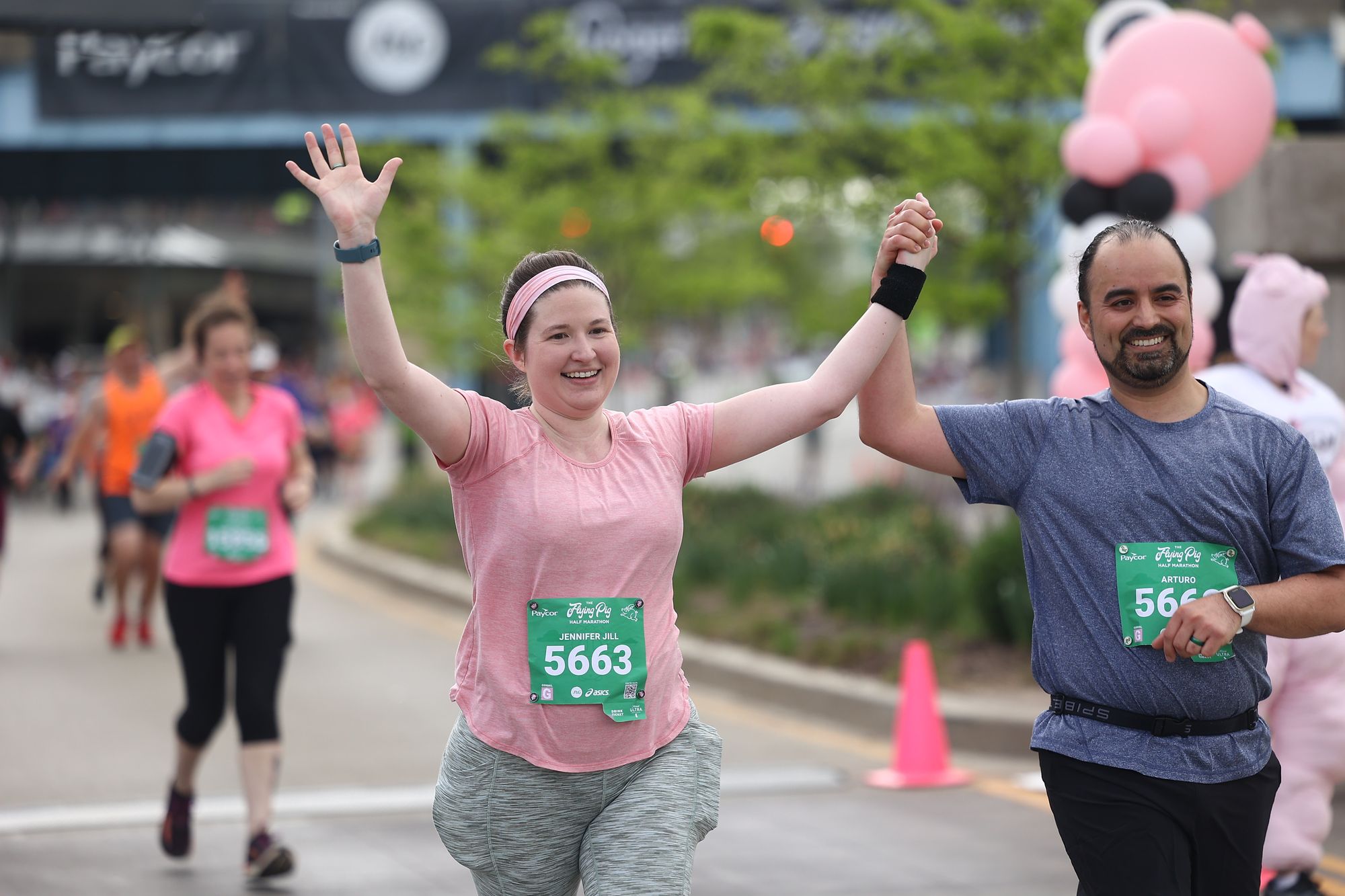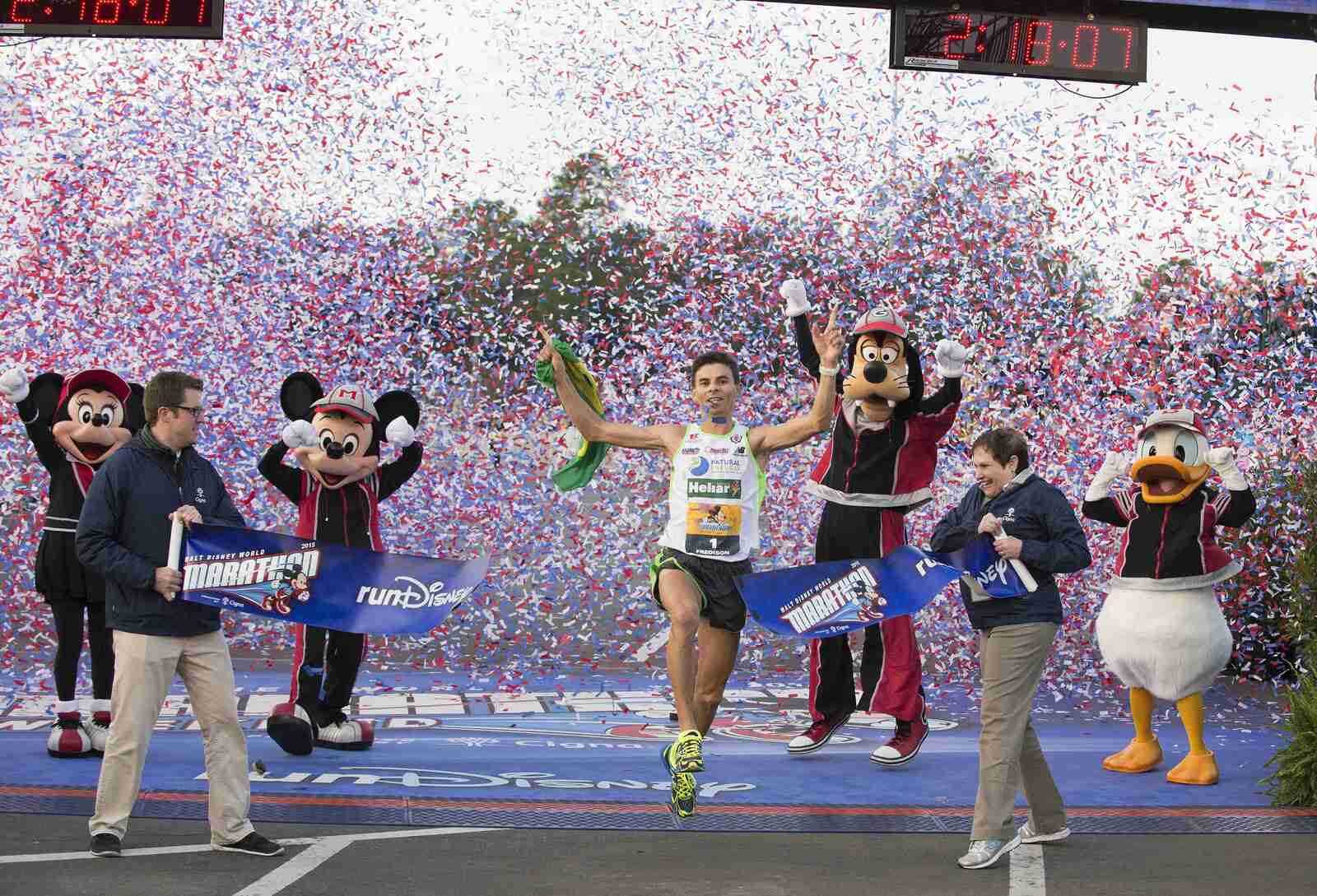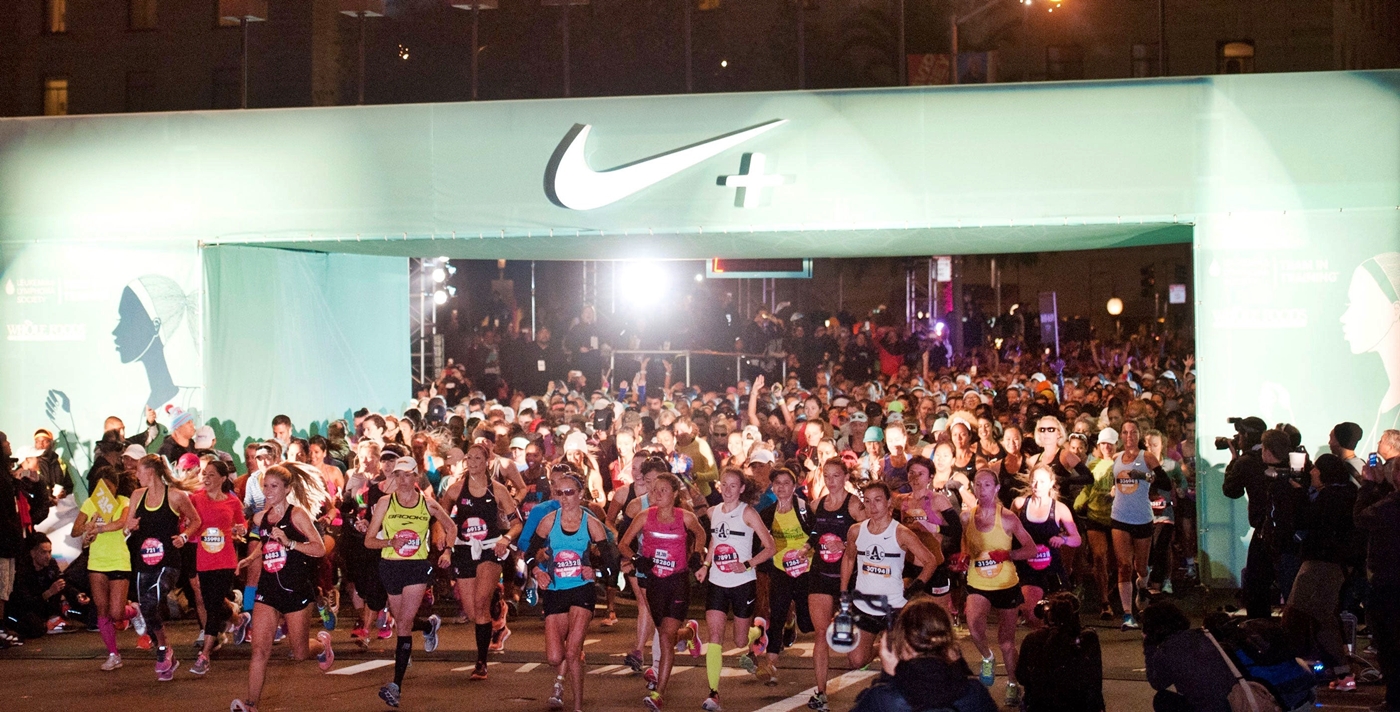

Featured
What Is A Half Marathon
Modified: January 22, 2024
Discover what a half marathon is and how you can be a part of this featured event. Join thousands of runners in this challenging yet rewarding race.
Introduction
Welcome to the world of half marathons! If you have ever been curious about the exhilaration of long-distance running, then a half marathon might just be the perfect challenge for you. A half marathon is a race that covers a distance of 13.1 miles or 21.1 kilometers. It is a popular event that attracts both seasoned runners and beginners looking to push their limits and achieve a significant fitness milestone.
Participating in a half marathon is not only a physical feat but also a mental and emotional journey. It requires dedication, discipline, and perseverance. Half marathons have gained increasing popularity in recent years due to their manageable distance and inclusive nature. Whether you are a seasoned athlete or a casual runner, completing a half marathon can be a transformative experience that leaves you with a sense of accomplishment and newfound confidence.
In this article, we will explore the world of half marathons, providing you with everything you need to know about this exciting sport. From the definition and history of half marathons to the benefits of running one, we will take a comprehensive look at what makes these races both challenging and rewarding. Additionally, we will delve into the essential aspects of training, nutrition, gear, injury prevention, and race day tips to help you prepare and excel in your half marathon journey.
If you have ever wondered what it takes to run a half marathon, or if you are considering signing up for your first one, you have come to the right place. Let’s embark on this adventure together and discover the incredible world of half marathons!
Definition of a Half Marathon
A half marathon is a long-distance running event that covers a distance of 13.1 miles or 21.1 kilometers. It is exactly half the distance of a full marathon, hence the name “half marathon.” Often regarded as the perfect stepping stone between shorter distance races like 5Ks and 10Ks and the ultimate challenge of a full marathon, the half marathon offers a unique blend of endurance, speed, and mental fortitude.
Half marathons are organized as both competitive races and recreational events, attracting participants from all walks of life. They are held on various terrains, including roads, trails, and even indoor tracks. The popularity of half marathons can be attributed to their accessibility and the sense of accomplishment they bring to runners of all skill levels.
Participants in a half marathon are often greeted with a festive and supportive atmosphere. Spectators line the race route, cheering and encouraging runners as they push themselves towards the finish line. The camaraderie and shared sense of achievement make half marathons not only physically challenging but also socially enriching experiences.
Half marathons are typically timed events, and participants may receive race bibs, finisher medals, and official race shirts as tokens of their accomplishment. Many runners choose to challenge themselves by setting personal goals for their finish time or by using the race as a stepping stone towards their ultimate marathon goal.
It is important to note that while a half marathon may seem less intimidating than a full marathon, it still requires commitment, dedication, and proper training. It is essential to approach the distance with respect and follow a structured training plan to adequately prepare your body for the physical demands of the race.
In the following sections, we will dive deeper into the history of half marathons and explore the many benefits that come with participating in and completing these incredible races.
History of Half Marathons
The history of half marathons can be traced back to the early 20th century when marathons started gaining popularity as organized racing events. The Half Marathon distance, however, didn’t become an official race distance until the 1960s.
The origins of the half marathon can be attributed to the Royal Family’s influence in the United Kingdom. Princess Marie Louise of Schleswig-Holstein, granddaughter of Queen Victoria, loved long-distance running but was advised against participating in a full marathon. In 1908, she organized a 13.1-mile race near Windsor Castle, which is often considered the precursor to the modern half marathon.
The first mass-scale half marathon race, known as the Plymouth to Drake’s Island race, took place in Plymouth, England, in 1934. It was followed by the Morecambe Half Marathon in 1936. These events marked the initial steps towards establishing the popularity of the half marathon distance.
However, it wasn’t until the 1960s that the half marathon gained widespread recognition and became an official race distance. The first internationally recognized half marathon race, the United Airlines New York City Half Marathon, was organized in 1959. It attracted top-level athletes and set the stage for the half marathon’s growth as a professional sport.
Half marathons started becoming more prevalent globally in the 1970s and 1980s, with race organizers seeing the benefits of offering this distance to a wider range of participants. The 1980s marked a crucial turning point for the half marathon, as it achieved official recognition by international governing bodies like the International Association of Athletics Federations (IAAF) and the Association of International Marathons and Distance Races (AIMS).
In recent years, half marathons have experienced a significant surge in popularity. According to Running USA’s annual reports, the number of half marathon finishers reached a peak of over 2 million in 2014. This growth can be attributed to various factors, including increased accessibility, improved training resources, and the inclusive nature of the distance.
Today, there are countless half marathon races held around the world, ranging from iconic events like the New York City Half Marathon and the Great North Run to local community races that attract runners of all abilities. The rich history and continuous popularity of the half marathon highlight its enduring appeal as a challenging yet achievable distance for both seasoned runners and beginners alike.
Benefits of Running a Half Marathon
Running a half marathon offers numerous benefits that extend beyond just the physical aspect. It is a transformative experience that challenges and strengthens the body, mind, and spirit. Here are some key benefits of taking on the challenge of a half marathon:
- Improved Fitness: Training for a half marathon requires consistent physical activity, helping to improve cardiovascular endurance, strengthen muscles, and increase overall fitness levels. It promotes weight management and can contribute to a healthier lifestyle.
- Mental Resilience: Completing a half marathon requires mental endurance and perseverance. The training process teaches you how to push through physical and mental barriers, enhancing your mental resilience, determination, and discipline.
- Setting and Achieving Goals: Running a half marathon gives you a tangible and measurable goal to work towards. Setting a training plan, meeting milestones, and ultimately crossing the finish line can be incredibly empowering and boost your self-confidence.
- Social Engagement: Half marathons are social events that bring together a diverse community of runners. You have the opportunity to connect with like-minded individuals, make new friends, and share the exhilaration of achieving a common goal.
- Stress Relief: Running is a natural stress-reliever and can help reduce anxiety and improve overall mental well-being. The sense of accomplishment and the endorphin rush that comes from completing a half marathon can provide a lasting mood boost.
- Sense of Achievement: Crossing the finish line of a half marathon is an incredible achievement. It represents not only the completion of a physical challenge but also a personal triumph. The satisfaction and pride that come with completing a half marathon stay with you long after the race.
- Increased Motivation: The commitment and discipline required to train for a half marathon can spill over into other areas of life. The perseverance and dedication developed during training can translate into increased motivation and productivity in various aspects of life.
Whether you are a seasoned runner looking for a new challenge or a beginner seeking to embark on a fitness journey, running a half marathon offers a multitude of physical, mental, and emotional benefits. It pushes you beyond your comfort zone, helps you discover your inner strength, and leaves you with a newfound sense of accomplishment and confidence.
Training for a Half Marathon
Training for a half marathon is a crucial aspect of preparing your body for the physical demands of the race. Whether you are a recreational runner or have previous race experience, following a structured training plan will help improve your endurance, build strength, and minimize the risk of injuries. Here are key factors to consider when training for a half marathon:
- Gradual Progression: It is vital to gradually increase your mileage and intensity over time. Start with a solid base of running fitness and slowly build up your weekly mileage, allowing your body to adapt and minimize the risk of overuse injuries.
- Consistency: Consistency is key when training for a half marathon. Aim for a regular training schedule, incorporating a mix of running, cross-training, and rest days. This will help build your endurance and improve your overall fitness level.
- Long Runs: Long runs are a vital component of half marathon training. Once a week, schedule a longer run at a slower pace than your normal training runs, gradually increasing the distance each week. This will help build your cardiovascular endurance and mentally prepare you for the race distance.
- Speed Workouts: Incorporate speed workouts, such as interval training and tempo runs, into your training to improve your speed and endurance. These workouts help you develop the ability to maintain a faster pace over longer distances.
- Strength Training: Include strength training exercises in your training plan to improve your overall muscular strength, stability, and running economy. Focus on exercises that target the major muscle groups, such as squats, lunges, planks, and core exercises.
- Rest and Recovery: Allow for adequate rest and recovery days in your training plan. Rest days are as important as your training days, allowing your body to repair and rebuild, reducing the risk of injuries and preventing burnout.
- Nutrition and Hydration: Fueling your body with a balanced diet and staying properly hydrated is essential during training. Ensure you have a nutrition plan in place to support your training, including pre and post-run meals. During longer runs, consider carrying hydration and fuel with you to maintain energy levels.
Remember, every runner is unique, and it’s important to listen to your body throughout the training process. Adjust your training plan as needed to accommodate your fitness level, schedule, and any physical limitations.
By following a well-structured training plan, pacing yourself appropriately, and taking care to rest and recover, you will be well-prepared to tackle the half marathon distance with confidence and strength.
Common Mistakes to Avoid in Half Marathon Training
Training for a half marathon requires careful planning and execution to ensure you reach the start line in optimal condition. Avoiding common training mistakes can help prevent injuries, maintain motivation, and maximize your performance on race day. Here are some key mistakes to avoid during half marathon training:
- Skipping Rest and Recovery: Rest and recovery are crucial for allowing your body to repair and adapt. Avoid the temptation to skip rest days or push through when you’re feeling fatigued. Overtraining can lead to burnout and increase your risk of injuries.
- Not Following a Training Plan: Having a structured training plan is essential for gradual progression and avoiding overtraining. Don’t underestimate the importance of a well-designed plan that includes a mix of running, cross-training, strength training, and rest days.
- Too much, too soon: Gradually increasing mileage and intensity is key to preventing overuse injuries. Avoid the mistake of ramping up your training too quickly. Stick to a gradual progression and listen to your body’s signals of fatigue or pain.
- Neglecting Strength Training: Building muscular strength and stability is crucial for injury prevention and improved running performance. Don’t make the mistake of neglecting strength training in your training plan. Include exercises that target major muscle groups, such as squats, lunges, and core work.
- Ignoring Cross-Training: Incorporating cross-training activities like cycling, swimming, or yoga can provide cardiovascular benefits, improve muscle balance, and give your body a break from running. Don’t make the mistake of solely focusing on running without incorporating other forms of exercise.
- Neglecting Nutrition: Proper nutrition is essential for fueling and recovering from training. Avoid the mistake of neglecting your nutrition by consuming a balanced diet that includes carbohydrates, protein, healthy fats, and plenty of fruits and vegetables. Stay properly hydrated before, during, and after runs.
- Not Practicing Race Day Conditions: Prepare yourself mentally and physically by simulating race day conditions during your training. Practice running in similar weather conditions, wearing the same gear, and fueling/hydrating similarly to what you plan to do on race day.
- Comparing Yourself to Others: Avoid the mistake of comparing your progress or performance to others. Every runner is unique, and everyone progresses at their own pace. Focus on your personal goals and celebrate your own accomplishments.
- Ignoring Warning Signs of Injury: Don’t push through pain or ignore warning signs of injury. If you experience persistent pain or discomfort during training, seek professional guidance and consider taking time off or modifying your training to allow for proper recovery.
By being aware of these common mistakes, you can set yourself up for a successful and injury-free half marathon training journey. Remember to listen to your body, follow a well-designed training plan, and prioritize rest, recovery, and proper nutrition.
Nutrition and Hydration for Half Marathon Runners
Proper nutrition and hydration play a crucial role in maximizing performance, aiding recovery, and maintaining overall health during half marathon training and on race day. Here are key considerations for nutrition and hydration for half marathon runners:
- Pre-run Nutrition: Fueling your body adequately before a long run or race is essential. Consume a balanced meal containing carbohydrates, protein, and healthy fats about 2-3 hours before the run to provide sustained energy. Avoid high-fiber and high-fat foods that may cause digestive discomfort.
- Hydration: Staying properly hydrated is vital for optimal performance. Hydrate throughout the day leading up to your run and carry a water bottle with you during your training sessions. During longer runs, consider carrying a hydration pack or using hydration stations along your route.
- During-run Nutrition: For runs lasting longer than 60-90 minutes, consider consuming easily digestible carbohydrates, such as energy gels, sports drinks, or small snacks, to maintain energy levels. Experiment with different options during training to find what works best for you.
- Post-run Recovery: Consuming a combination of carbohydrates and protein within 30-60 minutes after your run helps replenish glycogen stores and aids in muscle recovery. Opt for a post-run snack or meal that includes a mix of whole grains, lean protein, fruits, and vegetables.
- General Diet: Focus on a well-balanced diet that includes a variety of nutrient-dense foods. Include carbohydrates for energy, lean proteins for muscle repair, healthy fats for satiety, and plenty of fruits and vegetables for vitamins, minerals, and antioxidants.
- Supplementation: While a well-rounded diet can usually provide all the necessary nutrients, some runners may benefit from additional supplementation. Consult with a healthcare professional to determine if you have any specific deficiencies or if supplementation may be beneficial for you.
- Experimentation and Personalization: Every runner is unique, and what works for one may not work for another. Experiment with different pre-run meals, during-run fueling options, and hydration strategies during your training runs to find what works best for your body and preferences.
- Timing: Pay attention to the timing of your meals and snacks. Ideally, plan to eat 2-3 hours before a run to allow for proper digestion. During longer runs, aim to consume small amounts of fuel every 30-45 minutes to maintain consistent energy levels.
- Listen to your Body: Tune in to your body’s signals and adjust your nutrition and hydration accordingly. Different weather conditions, training intensities, and personal preferences may impact your needs. Trust your instincts and make adjustments as needed.
Remember that nutrition and hydration are not one-size-fits-all. It’s important to experiment, listen to your body, and find a personalized approach that supports your training, performance, and overall well-being. Consider seeking guidance from a registered dietitian or nutritionist who specializes in sports nutrition for personalized advice and recommendations.
Motivation and Mental Preparation for a Half Marathon
Running a half marathon requires not only physical fitness but also mental strength and endurance. Maintaining motivation and developing a positive mindset are key to successfully completing the race. Here are some strategies for motivation and mental preparation:
- Set Clear Goals: Define your goals for the half marathon, whether it’s finishing the race, achieving a specific time, or simply enjoying the experience. Having a clear goal provides focus and motivation throughout the training process.
- Visualize Success: Use visualization techniques to imagine yourself crossing the finish line, accomplishing your goals, and feeling a sense of pride and accomplishment. Visualizing success can boost motivation and build confidence in your ability to achieve your desired outcome.
- Develop a Training Routine: Establish a consistent training routine to help maintain motivation. Having a structured plan with set training days and goals can provide a sense of purpose and progress as you tick off completed workouts.
- Find a Running Partner or Group: Joining a running group or finding a training partner can provide accountability, support, and motivation. Surrounding yourself with like-minded individuals who share your enthusiasm for running can be highly motivating.
- Break it Down: Instead of focusing solely on the entire distance of the half marathon, break it down into smaller milestones. Set goals for each training run and track your progress. Celebrate the little victories along the way, such as completing long runs or achieving a new personal best.
- Practice Positive Self-Talk: Pay attention to your inner dialogue and replace negative thoughts with positive affirmations. Remind yourself of your strengths, progress, and resilience. Positive self-talk can help overcome self-doubt and keep you motivated during challenging moments.
- Build a Support System: Surround yourself with friends, family, and fellow runners who support your training and share your excitement. Share your goals and progress with them, and lean on them for encouragement and motivation when you need it most.
- Embrace the Journey: Recognize that training for a half marathon is a transformative journey. Embrace the ups and downs, the challenges and triumphs, and the personal growth that comes with pushing beyond your comfort zone. Enjoy the process and celebrate every step of the way.
- Stay Inspired: Find inspiration from other runners, stories, and resources. Read books, watch documentaries, and connect with the running community through social media platforms. Surrounding yourself with running inspiration can fuel your motivation and remind you of the possibilities.
Remember, motivation and mental preparation are just as important as physical training when it comes to tackling a half marathon. Cultivating a positive mindset, staying focused on your goals, and embracing the journey will help you stay motivated and mentally strong throughout your training and on race day.
Choosing the Right Gear for a Half Marathon
When preparing for a half marathon, choosing the right gear is essential for comfort, performance, and injury prevention. Here are key considerations for selecting the right gear:
- Running Shoes: Invest in a good pair of running shoes that provide proper support, cushioning, and a comfortable fit. Visit a specialty running store to get fitted and choose shoes that accommodate your running style and foot shape.
- Moisture-Wicking Clothing: Opt for moisture-wicking, breathable fabrics to help regulate your body temperature and manage sweat. Avoid cotton as it can retain moisture and lead to discomfort and chafing.
- Socks: Choose socks made of moisture-wicking materials to help prevent blisters and keep your feet dry. Look for socks with cushioning in key areas, such as the heel and ball of the foot.
- Compression Gear: Consider wearing compression socks, sleeves, or tights to improve blood circulation, reduce muscle fatigue, and aid in recovery. Compression gear can also provide added support to muscles and joints during longer runs.
- GPS Watch or Running App: Track your distance, pace, and heart rate with a GPS watch or running app on your phone. This can help you monitor your progress, set pacing goals, and track your performance during training runs.
- Body Glide or Anti-Chafing Products: Apply body glide or anti-chafing products to areas prone to friction or irritation, such as between the thighs or under sports bra straps. This will help prevent discomfort and chafing during longer runs.
- Hydration Gear: Depending on your personal preferences, consider options for carrying water or hydration on longer runs. This may include handheld water bottles, hydration belts, or hydration backpacks.
- Sports Watch or Fitness Tracker: Consider wearing a sports watch or fitness tracker to monitor heart rate, track steps, and record other useful metrics during your training. This can help you gauge your effort and track progress over time.
- Weather-Appropriate Gear: Be prepared for various weather conditions during your training and on race day. Have options for clothing layers, hats, sunglasses, and sunscreen to protect yourself from sun exposure, rain, wind, or cold temperatures.
- Race Day Apparel: In the weeks leading up to the race, test your race day apparel during long training runs to ensure it fits comfortably and doesn’t cause any discomfort or chafing. Avoid trying anything new on race day to prevent unexpected issues.
Everyone’s gear preferences may vary, so it’s important to experiment and find what works best for you. Take the time to try out different gear options during training to ensure comfort and functionality. Remember, the right gear can make a significant difference in your overall running experience and performance.
Injury Prevention and Recovery in Half Marathon Training
When training for a half marathon, it’s crucial to prioritize injury prevention and recovery. By taking proactive measures, you can minimize the risk of injuries and maximize your training and race day performance. Here are key strategies for injury prevention and recovery:
- Gradual Progression: Gradually increase your mileage and intensity during training to allow your body to adapt. Sudden increases in mileage or intensity can lead to overuse injuries. Follow a structured training plan that includes rest and recovery days.
- Proper Warm-up: Before each training run, warm up with dynamic stretches and light exercises to prepare your muscles and joints. A warm-up increases blood flow and flexibility, reducing the risk of injury.
- Strength Training: Incorporate strength training exercises into your training routine. Strengthening key muscle groups, including the core, hips, glutes, and legs, can improve stability and reduce the risk of running-related injuries.
- Cross-Training: Engage in cross-training activities, such as swimming, cycling, or yoga, to balance your muscles and give your body a break from the repetitive impact of running. Cross-training can improve your overall fitness, prevent overuse injuries, and aid in recovery.
- Listen to Your Body: Pay attention to any signs of pain, discomfort, or fatigue during your training runs. Do not push through persistent pain as it can lead to further injury. Rest, seek professional advice if needed, and modify your training accordingly.
- Proper Nutrition and Hydration: Fuel your body with a balanced diet and stay properly hydrated to support your training and recovery. Proper nutrition and hydration allow your body to repair and rebuild after workouts, reducing the risk of injuries.
- Rest and Recovery: Allow for adequate rest and recovery between training runs. Rest days are as important as training days to prevent overuse injuries and optimize your performance. Use rest days for gentle stretching, foam rolling, or other recovery methods like ice baths or massage.
- Stretching and Flexibility: Incorporate stretching exercises into your routine to improve flexibility and reduce muscle tightness. Focus on stretches that target the major muscle groups used in running, such as the calves, quads, hamstrings, and hip flexors.
- Proper Gear and Footwear: Choose running shoes that provide proper support and cushioning for your foot type and running style. Replace your shoes regularly to ensure optimal support. Additionally, wear moisture-wicking clothing that fits well to prevent chafing and irritation.
- Seek Professional Help: If you experience persistent or severe pain, consider seeking guidance from a healthcare professional specializing in sports medicine or a physical therapist. They can assess your condition, provide treatment, and offer guidance on effective rehabilitation exercises.
Remember, injury prevention and recovery are essential components of half marathon training. Prioritize these strategies to ensure you reach the start line healthy and ready to conquer the distance.
Race Day Tips for Running a Half Marathon
Race day is the culmination of your training journey and a time to put your hard work to the test. To ensure a successful and enjoyable half marathon experience, it’s important to prepare both physically and mentally. Here are some race day tips to help you make the most of your half marathon:
- Arrive Early: Plan to arrive at the race venue with ample time to pick up your bib, use the restroom, and warm up. Arriving early allows you to familiarize yourself with the surroundings and reduce pre-race anxiety.
- Stick to Your Routine: Stick to the same pre-race routine you followed during your training. This includes eating a familiar breakfast, wearing the same gear, and using the same pre-race warm-up routine. Familiarity helps reduce stress and ensures consistency.
- Pace Yourself: Start the race at a pace that feels comfortable and sustainable. Avoid the temptation to get caught up in the excitement and start too fast. Aim for a negative split, gradually increasing your pace as the race progresses.
- Stay Hydrated and Fuel Properly: Take advantage of the water and fuel stations along the course. Stay hydrated by consuming fluids at regular intervals and fuel your body with small amounts of easily digestible carbohydrates, such as energy gels or sports drinks, if needed.
- Break the Distance into Sections: Mentally break down the race distance into smaller sections or landmarks. Focus on reaching each milestone, whether it’s a water station or a specific mile marker. This approach can help make the distance feel more manageable.
- Run Your Race: Avoid comparing yourself to other runners. Focus on running at your own pace and staying within your own race plan. Trust your training and stay confident in your abilities.
- Use Positive Self-Talk: During challenging moments, use positive affirmations and self-talk to stay motivated. Remind yourself of your strength, resilience, and all the hard work you put into your training. Stay positive and keep pushing forward.
- Smile and Enjoy the Experience: Half marathons are as much about the experience as they are about the physical challenge. Smile, enjoy the crowd support, and take in the atmosphere. Embrace the cheers and energy from spectators as they can provide a significant boost.
- Focus on Form and Breathing: Maintain proper form and focus on your breathing throughout the race. Relax your shoulders, engage your core, and take deep breaths. Good form and controlled breathing can help conserve energy and maintain a smooth stride.
- Finish Strong: As you approach the finish line, give it your all and finish the race strong. Dig deep and tap into that reserve of mental and physical strength. The feeling of accomplishment as you cross the finish line will be incredibly rewarding and memorable.
Remember, race day is the culmination of your hard work, but it’s essential to enjoy the experience. Trust your training, stay positive, and embrace the adventure of running a half marathon. Celebrate your achievement and bask in the satisfaction of completing the distance!
Conclusion
Embarking on the journey of training for and running a half marathon is an incredible feat that pushes your physical and mental limits. It requires dedication, discipline, and perseverance. Throughout this article, we have explored the world of half marathons, from understanding the definition and history to uncovering the benefits and the essential aspects of training, nutrition, and gear selection.
A half marathon is not just a race; it is a transformative experience that offers a multitude of rewards. By taking on the challenge, you improve your fitness, build mental resilience, and foster a sense of achievement. The journey of training for a half marathon teaches you valuable life lessons about setting and achieving goals, managing setbacks, and discovering your inner strength.
Remember to approach your half marathon journey with careful preparation and a positive mindset. Follow a structured training plan, listen to your body, and prioritize nutrition, hydration, and rest. Choose the right gear, surround yourself with a supportive community, and stay motivated through visualization, goal-setting, and self-belief.
On race day, embrace the experience, pace yourself, and enjoy the atmosphere. Stay focused, steady your breathing, and maintain good form. Celebrate every milestone and finish strong, knowing that you have accomplished something remarkable.
Running a half marathon is not just about the distance, but the growth and personal transformation that come with it. So lace up your running shoes, set your goals, and embark on this incredible journey. No matter the outcome, crossing that finish line will be a moment of triumph that fills you with pride and establishes a lasting memory of your accomplishment.









